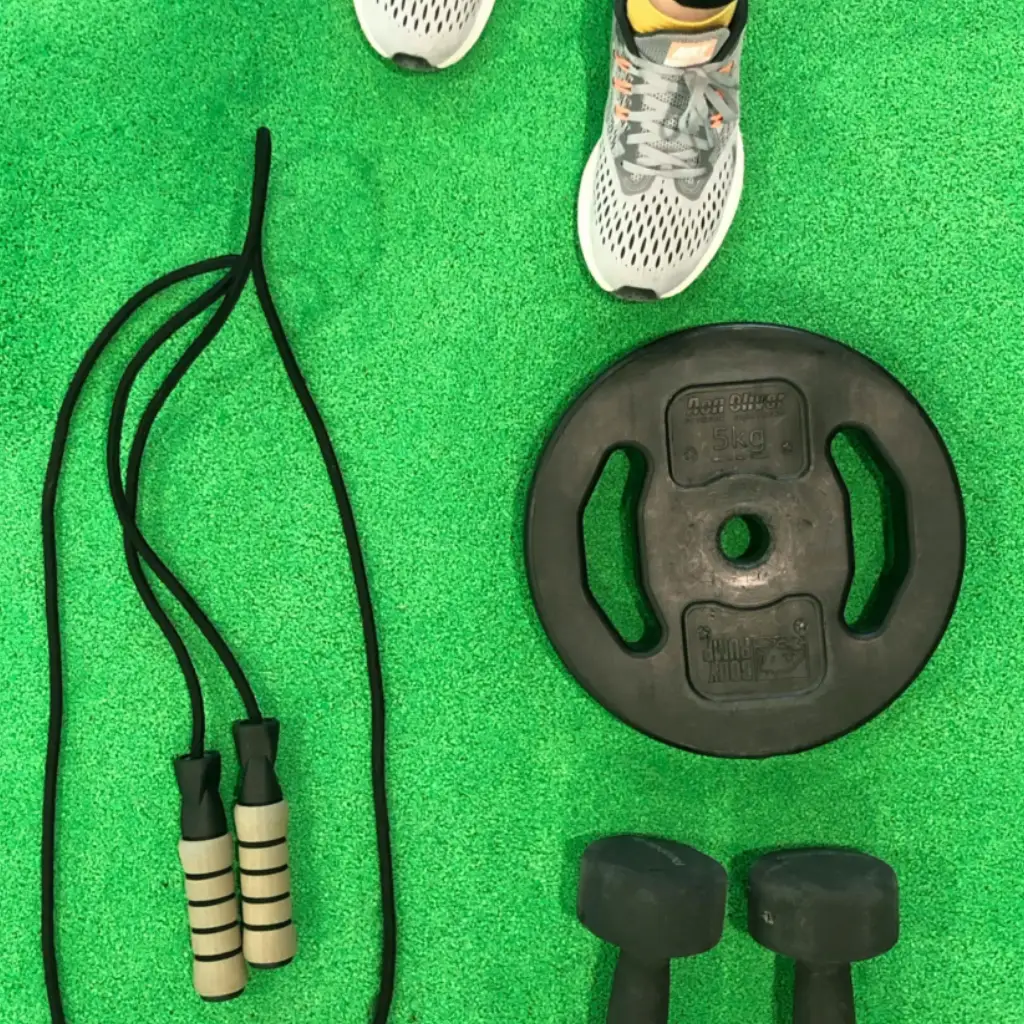If you’ve been searching for an efficient and effective workout that fits your busy schedule, you’ve likely come across the term High-Intensity Interval Training or HIIT. This powerful exercise has gained popularity for a good reason: it delivers impressive results relatively quickly. But what exactly is HIIT, and why should you consider adding it to your fitness routine?
Understanding High-Intensity Interval Training (HIIT)
High-intensity interval Training, or HIIT, is a workout technique alternating between short bursts of intense exercise and periods of lower-intensity recovery or rest. The idea behind HIIT is to push your body to its maximum potential during high-intensity intervals, followed by a period of rest that allows your heart rate to recover before you go hard again.
These workouts can be tailored to fit any fitness level, making them accessible to beginners and seasoned athletes. A typical HIIT session lasts 10 to 30 minutes, and because of its intensity, it’s a very effective way to burn calories, build strength, and improve cardiovascular health.
How Does HIIT Work?
HIIT works by maximizing your body’s ability to burn calories during and after the workout. During the high-intensity intervals, your body uses more oxygen than it can take in, leading to what is known as an “oxygen debt.” This oxygen debt must be repaid post-workout, which causes your metabolism to ramp up for hours after exercising. This experience is called excess post-exercise oxygen consumption (EPOC) or the “afterburn effect.”
Because HIIT pushes your body to its limits in short bursts, it activates fast-twitch muscle fibers, typically not engaged during lower-intensity, steady-state exercises like jogging. This results in improved muscular endurance and strength over time.
The Benefits of HIIT
The benefits of HIIT extend far beyond just burning calories. Here’s a deeper dive into why HIIT is so highly regarded in the fitness community:
1. Time Efficiency
One of the most appealing aspects of HIIT is that it allows you to achieve significant fitness results relatively quickly. For those with busy schedules, a 20-minute HIIT session can be just as practical as a 45-minute traditional workout. The high-intensity nature of HIIT means you’re working at a higher capacity, allowing you to maximize calorie burn and muscle engagement in less time.
2. Improved Cardiovascular Health
HIIT has been shown to improve cardiovascular health by increasing heart rate and enhancing the body’s ability to use oxygen. Over time, regular HIIT sessions can lead to lower blood pressure, improved cholesterol levels, and a reduced risk of heart disease. The intervals of high intensity followed by recovery periods condition the heart to respond better to physical stress, making it more robust and efficient.
3. Increased Metabolic Rate
One of the most exciting benefits of HIIT is its ability to boost your metabolism. Thanks to the after-burn effect, your body burns calories long after your workout. Studies have shown that HIIT can increase your metabolic rate for up to 48 hours post-exercise, meaning you’re burning more calories even when you’re not actively working out.
4. Fat Loss and Muscle Gain
HIIT is particularly effective for fat loss because it combines aerobic and anaerobic exercise, targeting fat while preserving muscle mass. The high-intensity intervals increase your heart rate and caloric burn, while the resistance-based movements during the workout help to build and maintain lean muscle. This combination is especially beneficial for those seeking to lose weight while retaining muscle tone.
5. Improved Insulin Sensitivity
Regular HIIT workouts can improve insulin sensitivity, crucial for managing blood sugar levels. This is especially important for individuals at risk of developing type 2 diabetes. By enhancing the body’s insulin use, HIIT can help reduce the risk of metabolic disorders and support overall metabolic health.
6. Enhanced Endurance and Stamina
HIIT improves your cardiovascular health and significantly boosts your endurance and stamina. Because HIIT workouts push your body to its limits, they condition your muscles and cardiovascular system to handle more stress over time. This means you’ll be able to perform better in other forms of exercise and daily activities.
7. Versatility and Accessibility
HIIT can be performed anywhere, with or without equipment. You can tailor a HIIT workout to fit your surroundings at the gym, at home, or even in a park. The exercises can also be modified to match your fitness level, making HIIT accessible to everyone, regardless of experience.
8. Mental Toughness
HIIT workouts are challenging, both physically and mentally. Pushing through the intense intervals requires focus and determination, which can help build mental resilience. Over time, your ability to handle stress and stay focused improves, both in and out of the gym.
Examples of HIIT Workouts
Depending on your goals, fitness level, and available equipment, there are countless ways to structure a HIIT workout. Below are a few examples of HIIT routines, each designed to target different aspects of fitness.
A. Bodyweight HIIT
Example Workout:
- Jump Squats: 30 seconds
- Push-Ups: 30 seconds
- High Knees: 30 seconds
- Plank: 30 seconds
Repeat for 3-4 rounds with 30 seconds of rest between rounds.
B. HIIT with Dumbbells
Example Workout:
- Dumbbell Thrusters: 30 seconds
- Bent-Over Rows: 30 seconds
- Burpees: 30 seconds
- Russian Twists: 30 seconds
Repeat for 3-4 rounds with 30 seconds of rest between rounds.
C. Cardio HIIT
Example Workout:
- Sprint: 30 seconds
- Jump Rope: 30 seconds
- Mountain Climbers: 30 seconds
- Butt Kicks: 30 seconds
Repeat for 3-4 rounds with 30 seconds of rest between rounds.
A 10-Minute HIIT Workout for Beginners
If you’re new to HIIT, starting with a short, beginner-friendly workout is a great way to ease into this type of training. Below is a 10-minute HIIT workout that requires no equipment and can be done anywhere.
Warm-Up (2 minutes):
- March in Place: 1 minute
- Arm Circles: 1 minute
Workout:
Jumping Jacks: 30 seconds
- Rest: 15 seconds
Bodyweight Squats: 30 seconds
- Rest: 15 seconds
Modified Push-Ups (on knees): 30 seconds
- Rest: 15 seconds
High Knees: 30 seconds
- Rest: 15 seconds
Plank (on forearms): 30 seconds
- Rest: 15 seconds
Cool Down (2 minutes):
- Slow March in Place: 1 minute
- Stretching: 1 minute (focus on hamstrings, quads, and shoulders)
This workout is developed to introduce you to the basics of HIIT without overwhelming you. As you become more comfortable with the exercises and your fitness improves, you can increase the duration of the workout or try more advanced HIIT routines.
Final Thoughts: Why You Should Try HIIT
High-intensity interval Training (HIIT) offers many benefits that can enhance your overall health, fitness, and well-being. HIIT is a versatile and practical option whether you want to lose weight, build muscle, improve cardiovascular health, or add variety to your workouts.
The best part? HIIT workouts are customizable so that you can tailor them to your fitness level and schedule. Whether you have 10 or 30 minutes to spare, a HIIT workout can help you reach your goals. Also, HIIT’s mental and physical challenges can build resilience and boost your confidence in your fitness journey.
So, why don’t you try HIIT? You might discover that this quick, intense, and efficient workout method is what you need to take your fitness to the next level.
By incorporating HIIT into your routine, you improve your physical health and invest in a more active, energized lifestyle. Start with the 10-minute beginner workout provided, and as you grow stronger, explore more challenging routines to continue enjoying the benefits of this powerful training method.



1 thought on “What is High-Intensity Interval Training (HIIT) and Why You Should Do It?”
Pingback: Watermelon Benefits for Weight Loss: A Sweet Journey to Shedding Pounds - Vivianamadi